Abstract
A quantitative method is described for the measurement of intralysosomal pH in living cells. Fluorescein isothiocyanate-labeled dextran (FD) is endocytized and accumulates in lysosomes where it remains without apparent degradation. The fluorescence spectrum of this compound changes with pH in the range 4-7 and is not seriously affected by FD concentration, ionic strength, or protein concentration. Living cells on coverslips are mounted in a spectrofluorometer cell and can be perfused with various media. The normal pH inside macrophage lysosomes seems to be 4.7-4.8, although it can drop transiently as low as 4.5. Exposure of the cells to various weak bases and to acidic potassium ionophores causes the pH to increase. The changes in pH are much more rapid than is the intralysosomal accumulation of the weak bases. Inhibitors of glycolysis (2-deoxyglucose) and of oxidative phosphorylation (cyanide or azide) added together, but not separately, cause the intralysosomal pH to increase. These results provide evidence for the existence of an active proton accumulation mechanism in the lysosomal membrane and support the theory of lysosomal accumulation of weak bases by proton trapping.
Full text
PDF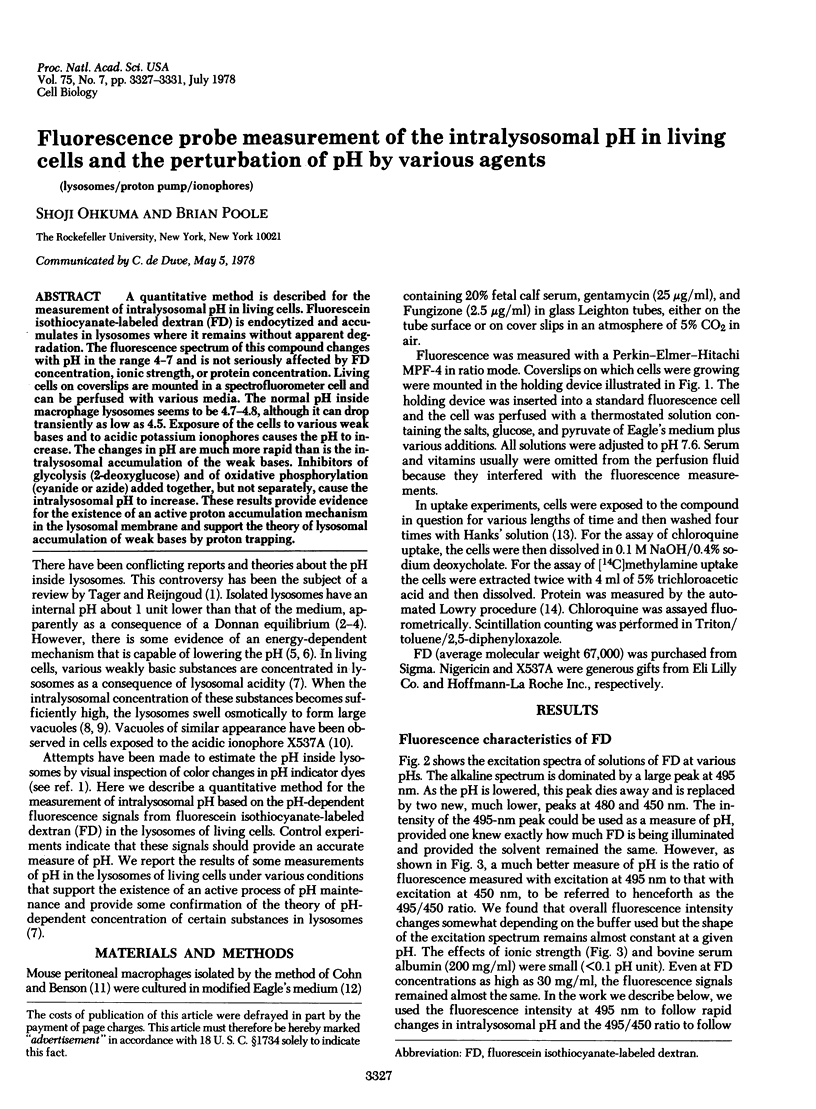
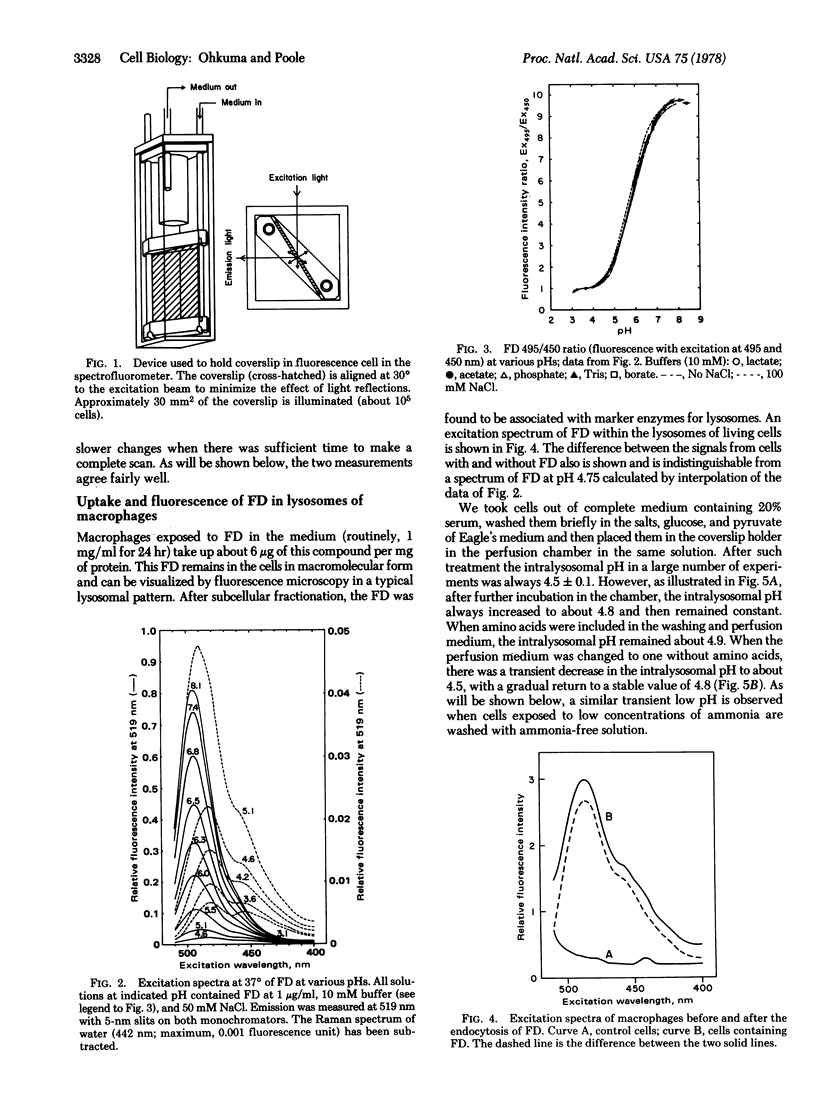
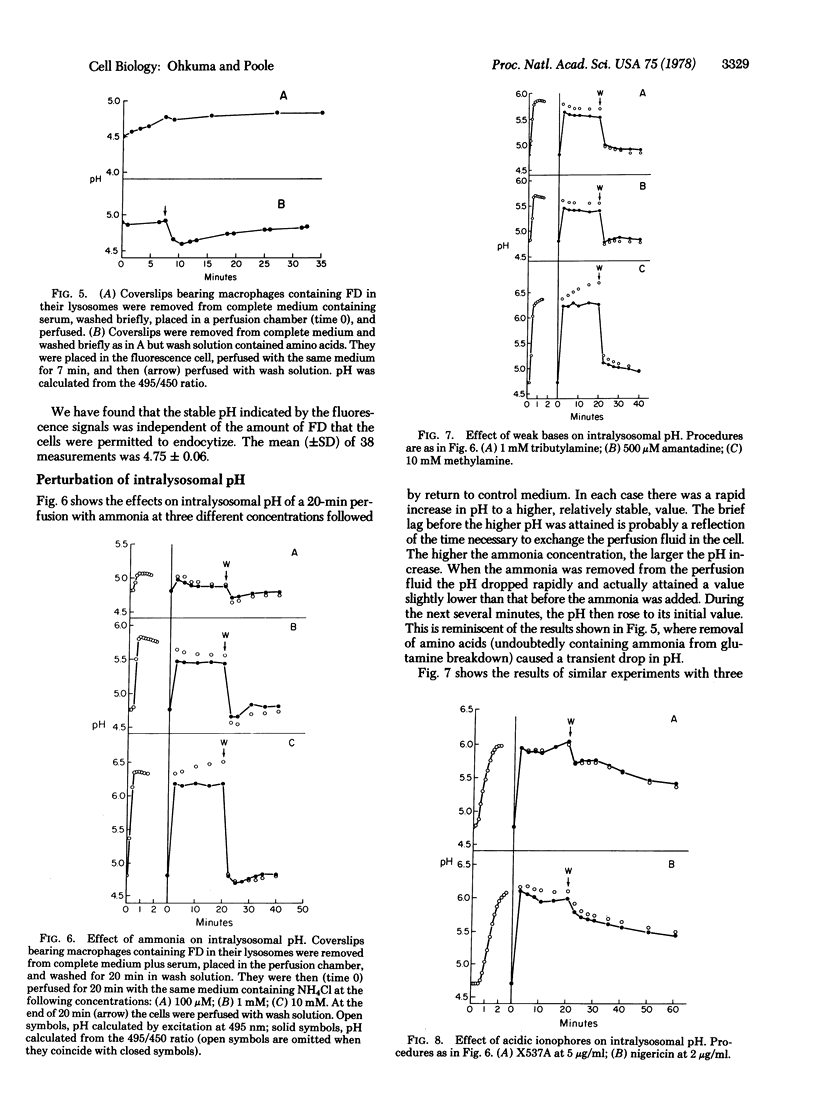
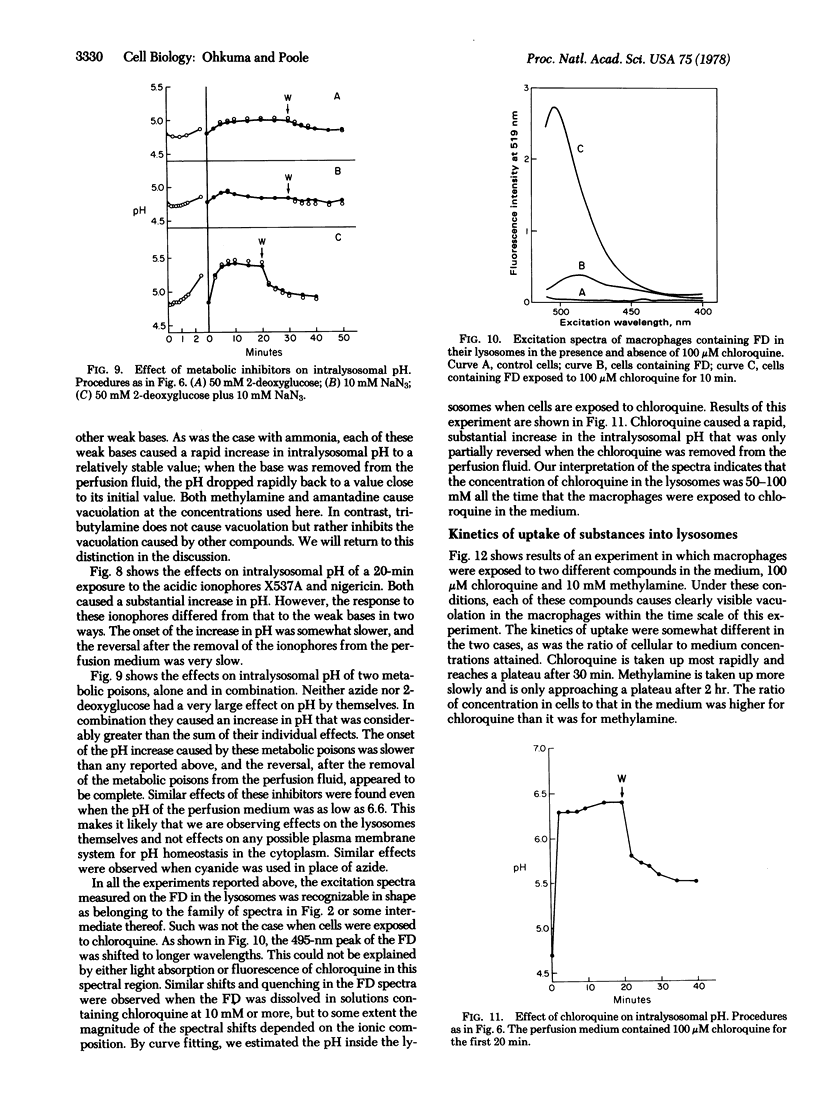
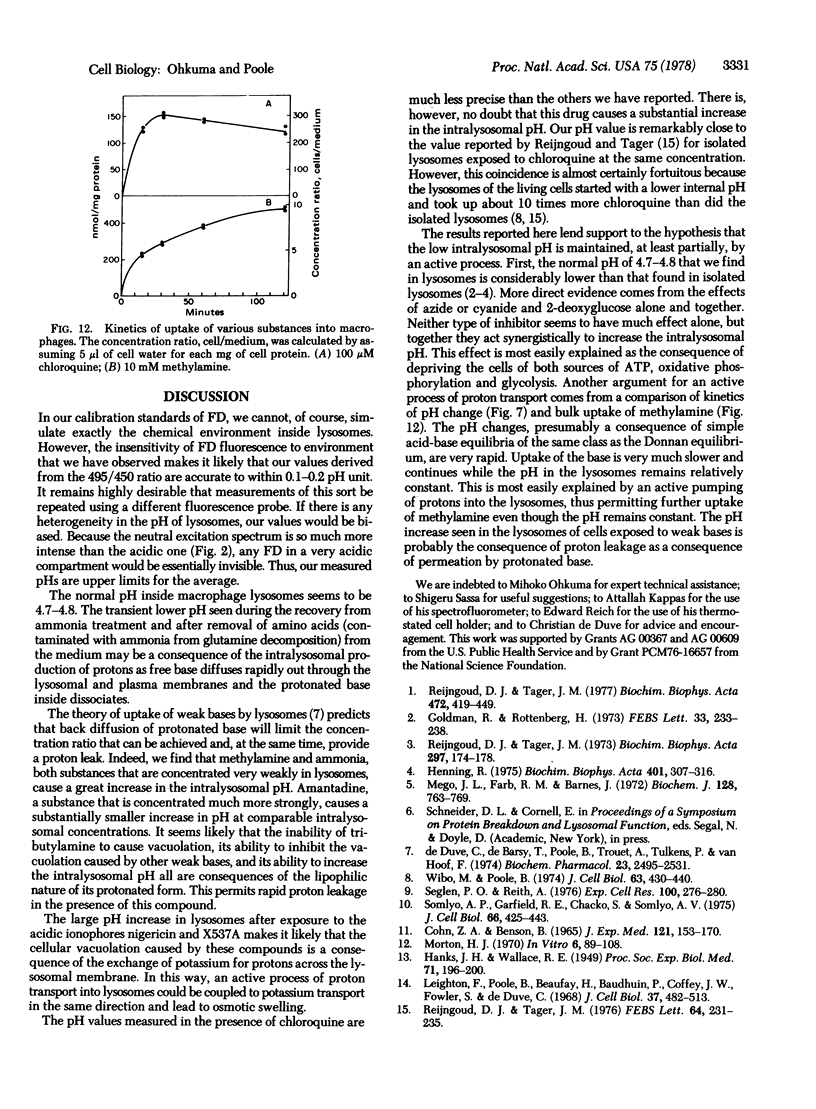
Selected References
These references are in PubMed. This may not be the complete list of references from this article.
- COHN Z. A., BENSON B. THE DIFFERENTIATION OF MONONUCLEAR PHAGOCYTES. MORPHOLOGY, CYTOCHEMISTRY, AND BIOCHEMISTRY. J Exp Med. 1965 Jan 1;121:153–170. doi: 10.1084/jem.121.1.153. [DOI] [PMC free article] [PubMed] [Google Scholar]
- Goldman R., Rottenberg H. Ion distribution in lysosomal suspensions. FEBS Lett. 1973 Jul 1;33(2):233–238. doi: 10.1016/0014-5793(73)80200-5. [DOI] [PubMed] [Google Scholar]
- Henning R. pH gradient across the lysosomal membrane generated by selective cation permeability and Donnan equilibrium. Biochim Biophys Acta. 1975 Aug 20;401(2):307–316. doi: 10.1016/0005-2736(75)90314-4. [DOI] [PubMed] [Google Scholar]
- Leighton F., Poole B., Beaufay H., Baudhuin P., Coffey J. W., Fowler S., De Duve C. The large-scale separation of peroxisomes, mitochondria, and lysosomes from the livers of rats injected with triton WR-1339. Improved isolation procedures, automated analysis, biochemical and morphological properties of fractions. J Cell Biol. 1968 May;37(2):482–513. doi: 10.1083/jcb.37.2.482. [DOI] [PMC free article] [PubMed] [Google Scholar]
- Mego J. L., Farb R. M., Barnes J. An adenosine triphosphate-dependent stabilization of proteolytic activity in heterolysosomes. Evidence for a proton pump. Biochem J. 1972 Jul;128(4):763–769. doi: 10.1042/bj1280763. [DOI] [PMC free article] [PubMed] [Google Scholar]
- Morton H. J. A survey of commercially available tissue culture media. In Vitro. 1970 Sep-Oct;6(2):89–108. doi: 10.1007/BF02616112. [DOI] [PubMed] [Google Scholar]
- Reijngoud D. J., Tager J. M. Chloroquine accumulation in isolated rat liver lysosomes. FEBS Lett. 1976 Apr 15;64(1):231–235. doi: 10.1016/0014-5793(76)80290-6. [DOI] [PubMed] [Google Scholar]
- Reijngoud D. J., Tager J. M. The permeability properties of the lysosomal membrane. Biochim Biophys Acta. 1977 Nov 14;472(3-4):419–449. doi: 10.1016/0304-4157(77)90005-3. [DOI] [PubMed] [Google Scholar]
- Riejngoud D. J., Tager J. M. Measurement of intralysosomal pH. Biochim Biophys Acta. 1973 Jan 24;297(1):174–178. doi: 10.1016/0304-4165(73)90061-5. [DOI] [PubMed] [Google Scholar]
- Seglen P. O., Reith A. Ammonia inhibition of protein degradation in isolated rat hepatocytes. Quantitative ultrastructural alterations in the lysosomal system. Exp Cell Res. 1976 Jul;100(2):276–280. doi: 10.1016/0014-4827(76)90148-8. [DOI] [PubMed] [Google Scholar]
- Somlyo A. P., Garfield R. E., Chacko S., Somlyo A. V. Golgi organelle response to the antibiotic X537A. J Cell Biol. 1975 Aug;66(2):425–443. doi: 10.1083/jcb.66.2.425. [DOI] [PMC free article] [PubMed] [Google Scholar]
- Wibo M., Poole B. Protein degradation in cultured cells. II. The uptake of chloroquine by rat fibroblasts and the inhibition of cellular protein degradation and cathepsin B1. J Cell Biol. 1974 Nov;63(2 Pt 1):430–440. doi: 10.1083/jcb.63.2.430. [DOI] [PMC free article] [PubMed] [Google Scholar]
- de Duve C., de Barsy T., Poole B., Trouet A., Tulkens P., Van Hoof F. Commentary. Lysosomotropic agents. Biochem Pharmacol. 1974 Sep 15;23(18):2495–2531. doi: 10.1016/0006-2952(74)90174-9. [DOI] [PubMed] [Google Scholar]


